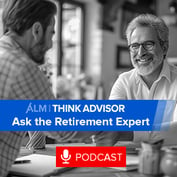Most individuals have not taken steps to plan for their health care costs in retirement, new research reveals.
AARP discloses this finding in a November 2013 survey that examines the American public’s awareness and concern about health care costs incurred in retirement. The report also seeks to determine whether or not pre-retirees are currently saving to cover future health care expenses, taking account of the fact that Medicare covers only about 51 percent of health care costs.
The report shows that across age groups, only about one-third (36 percent) have tried to estimate how much money they will need to save and have set money aside to cover these expenses in the future. Adults ages 60-64 (40 percent) are just slightly more likely than those ages 50-59 (35 percent) to have money set aside.








 December 02, 2013 at 11:10 AM
December 02, 2013 at 11:10 AM










